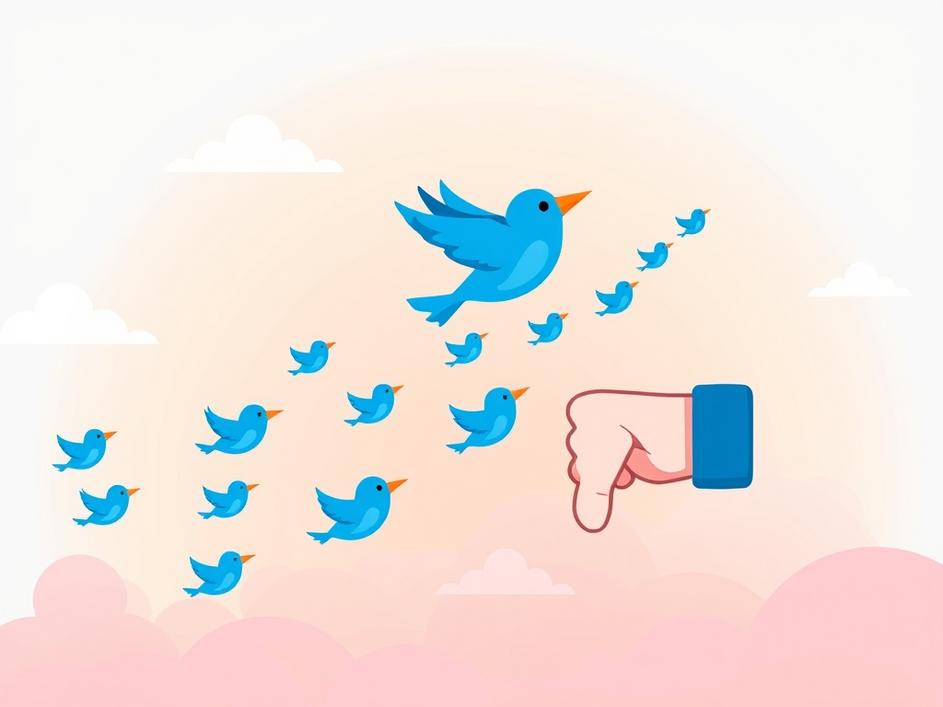


We are a digital agency helping businesses develop immersive, engaging, and user-focused web, app, and software solutions.
2310 Mira Vista Ave
Montrose, CA 91020
2500+ reviews based on client feedback

What's Included?
ToggleBluesky, a name that’s been buzzing quietly in tech circles, just hit a massive milestone: 40 million users. That’s a lot of people, especially for a platform that, not too long ago, felt like a secret club. It shows that folks are really looking for something different in their online hangouts. We’ve all seen social media platforms rise and fall, or just get…stale. But Bluesky, with its roots in something called the “fediverse” – which basically means it’s built to be more open and less controlled by one big company – seems to be hitting a nerve. This isn’t just about big numbers; it’s about a growing appetite for social spaces that feel more about community and less about algorithms pushing things at you. The jump to 40 million isn’t just a win for Bluesky; it’s a sign that the social media landscape is shifting, and people are ready to explore beyond the usual suspects. This growth also sets the stage for some interesting new features, hinting at how Bluesky plans to keep its users engaged and their feeds feeling fresh.
So, alongside this big user announcement, Bluesky also spilled the beans on a new feature they’re testing: a ‘dislike’ button. Now, before you picture a flood of negativity, hold on. This isn’t meant to be a way to attack posts or send them into oblivion. Instead, Bluesky says it’s for improving your “Discover” feed – that part of the app that shows you new stuff. Think of it more like a gentle “no thanks” signal. When you dislike something, it tells the system, “Hey, I don’t really want to see more content like this.” It’s not about public shaming; it’s about giving users a quiet tool to fine-tune what they experience. This approach is pretty smart. We’ve all scrolled through feeds filled with stuff we just don’t care about, or even actively dislike. Giving users a direct, private way to say “less of this, please” could make a big difference in how personal and enjoyable their browsing becomes. It’s a subtle but powerful way to hand more control back to the user.
The idea behind this dislike button is all about personalization. Imagine being able to actively shape what kind of content pops up in your suggested feeds. Most platforms try to guess what you like based on what you *engage* with – what you like, share, or comment on. But sometimes, you just scroll past something you don’t like, and the algorithm thinks your silence means indifference, or even passive acceptance. A dislike button cuts through that ambiguity. It’s a clear signal. This could mean a less cluttered, more relevant experience for users, which is a huge win. We’re all bombarded with information, and having a social space that truly feels tailored to our interests, filtering out the noise, is incredibly appealing. However, there’s a flip side: the risk of creating too much of an echo chamber. If we only see what we already agree with or find palatable, we might miss out on different perspectives or important information that challenges our views. It’s a delicate balance to strike between giving users control and ensuring they don’t get stuck in a bubble.
So, why has Bluesky managed to draw in 40 million users when there are so many social media giants already out there? I think a big part of it is timing and what it offers. People are tired of the constant changes, the ads, and the feeling of being manipulated by big tech companies on older platforms. Bluesky came along promising a different way, built on an open standard that allows for more choice and control. It started as an invite-only app, which created a sense of exclusivity and curiosity, almost like a digital speakeasy. This slow, controlled growth allowed a core community to form, which then organically attracted more users once it opened up. It feels less like a corporate product and more like a shared space. Users get a say, and developers can build on top of its open framework, leading to new features and experiences that might not be possible elsewhere. This combination of community focus, user control, and an alternative tech philosophy seems to be a powerful magnet.
Hitting 40 million users is fantastic, but it also brings a whole new set of challenges for Bluesky. As any platform grows, the trick is to maintain what made it special in the first place. How do they keep that community feel when millions more join? Moderation becomes a much bigger beast to tackle. With a ‘dislike’ button, even if it’s for personalization, there’s always the potential for it to be misused or misunderstood, impacting content creators. They’ll need strong systems to prevent abuse and ensure a healthy environment. And then there’s the challenge of competing with established players who have massive resources and years of ingrained user habits. Bluesky needs to keep innovating, keep its platform stable, and keep listening to its growing user base. It’s a tricky dance between scaling up and staying true to its original vision. The next few years will be crucial in seeing if Bluesky can truly carve out a lasting space in the crowded world of social media.
Bluesky’s journey to 40 million users, coupled with its smart move to add a personalization-focused ‘dislike’ feature, signals something important for the broader social media landscape. It shows that there’s a real hunger for alternatives, for platforms that prioritize user experience and control over endless scrolling and algorithmic manipulation. This isn’t just about another app; it’s about a shift in what people expect from their online interactions. As Bluesky continues to grow and experiment, it might just inspire other platforms to rethink their own approaches to content moderation, personalization, and user engagement. It’s a reminder that innovation doesn’t always come from the biggest players, and sometimes, a fresh perspective can make all the difference. The ‘dislike’ button, in its quiet way, could set a new standard for how users provide feedback, making feeds genuinely more enjoyable and less overwhelming. It’s an exciting time to watch how this blue bird continues to spread its wings.



Leave a reply